17.000 €
A military still life commemorating the Turkish defeat at the Battle of Vienna in 1683
(the Battle on the Kahlenberg)
Oil on canvas : 110,3 X 159,0 cm
Unsigned
Frame : 113,6 X 171,8 cm
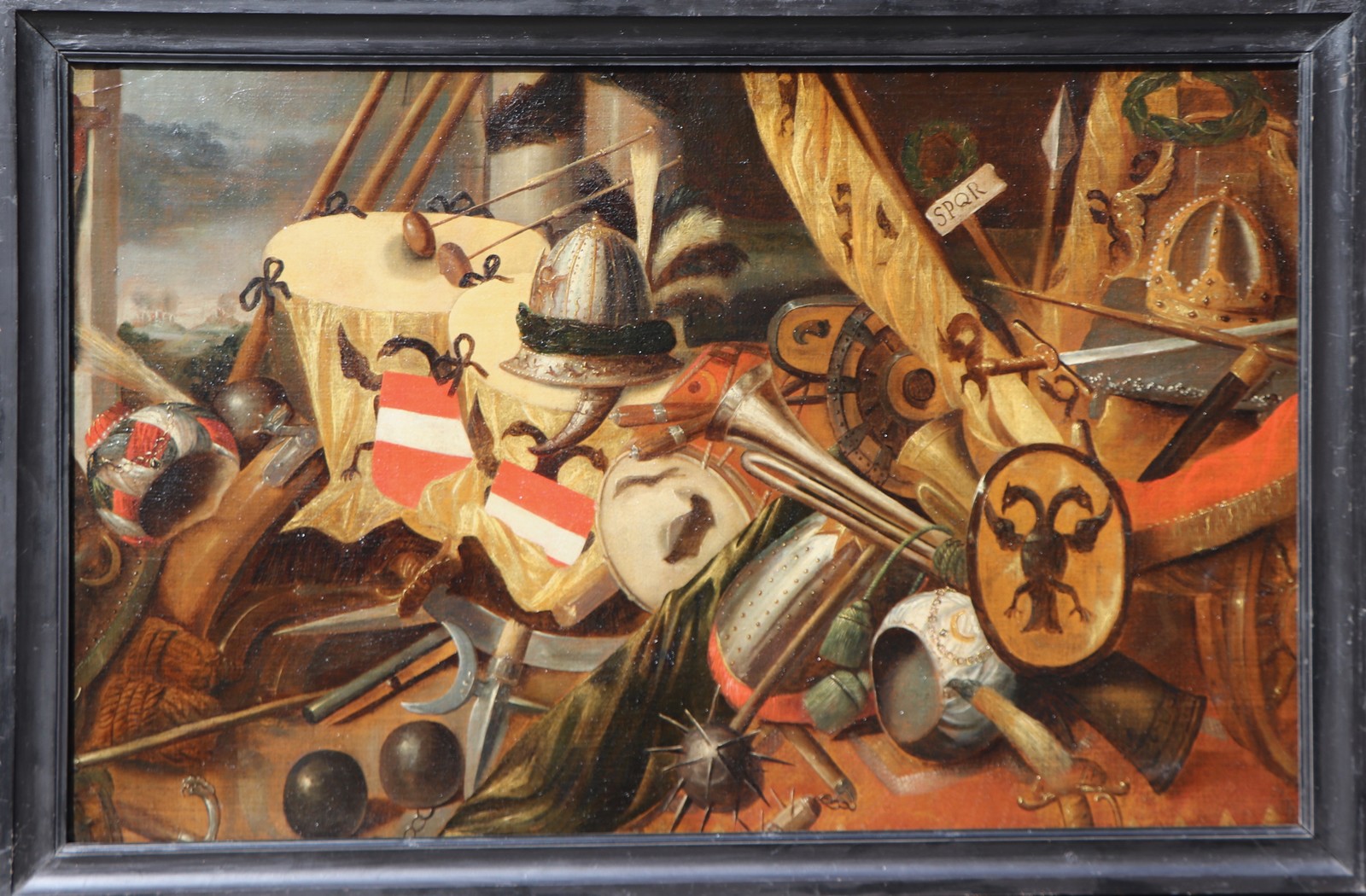
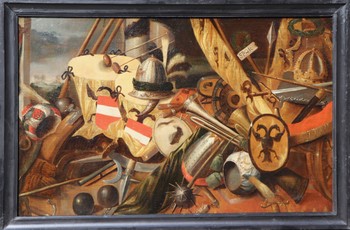
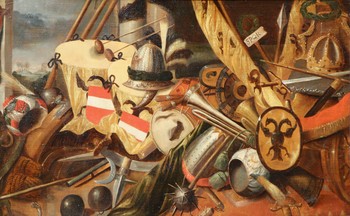
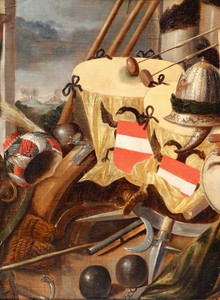
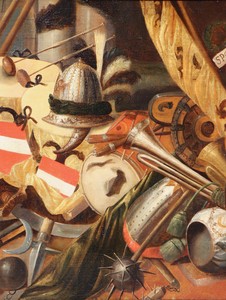
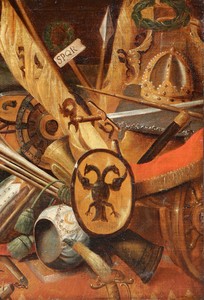
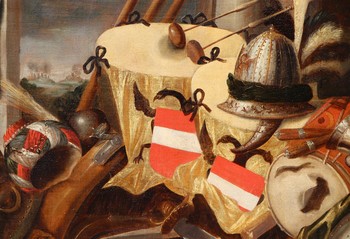
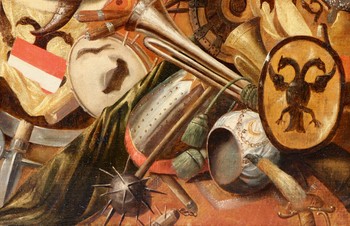
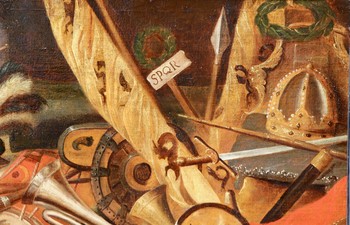
In short
In 1683 a huge Turkish army attacked Vienna: Emperor Leopold abandoned his capital and fled to Passau. King John III Sobieski of Poland came to his aid and the Ottoman army was beaten decisively during the Battle of the Kahlenberg. Our unique painting commemorates this tipping point in history: this had been the deepest Turkish attack in the Christian world, from now on they were being pushed back.
About the Battle of Vienna
At the end of the 17th century Europe was in panic: the old hereditary enemy, the Turks, pushed forwards through Eastern Europe, aiming to take Vienna. One year earlier, in 1682, the appearance over Europe of comet Halley had seemed for many Christians an extremely bad omen.
July 14th 1683 Kara Mustafa Pasha, Grand-Vizier of the Turkish sultan Mehmed IV, thanks to a revolt of the Hungarian nobility, brought without opposition a huge army of 150.000 men to the gates of Vienna. The Holy Roman emperor Leopold fled from his capital as Vienna, defended by only 15.000 men plus 8.700 volunteers, was to fall.
Pope Innocentius XI, afraid that the Turks might continue onto Rome, called for Christian solidarity, “solidarnosc”, a word dear to the Poles. The Polish-Lithuanian Commonwealth sent two armies, the Lithuanians arrived too late. The combined Catholic armies from Poland, Germany and Austria, led by the Polish King John III Sobieski, defeated on September 12th the Turks in the famous Battle on the Kahlenberg. It was a huge defeat for the Ottoman empire, and an enormous relief for the Christian world. Never again would an Islamic army push forward this deep into Christian Europe.
About our painting
Our painting holds elements referring to the three main opponents of the battle: The Turkish Ottomans, the Polish and Habsburg monarchies.
Why should you buy this painting?
Because it is a unique piece of art, commemorating a decisive turning point in European history.
